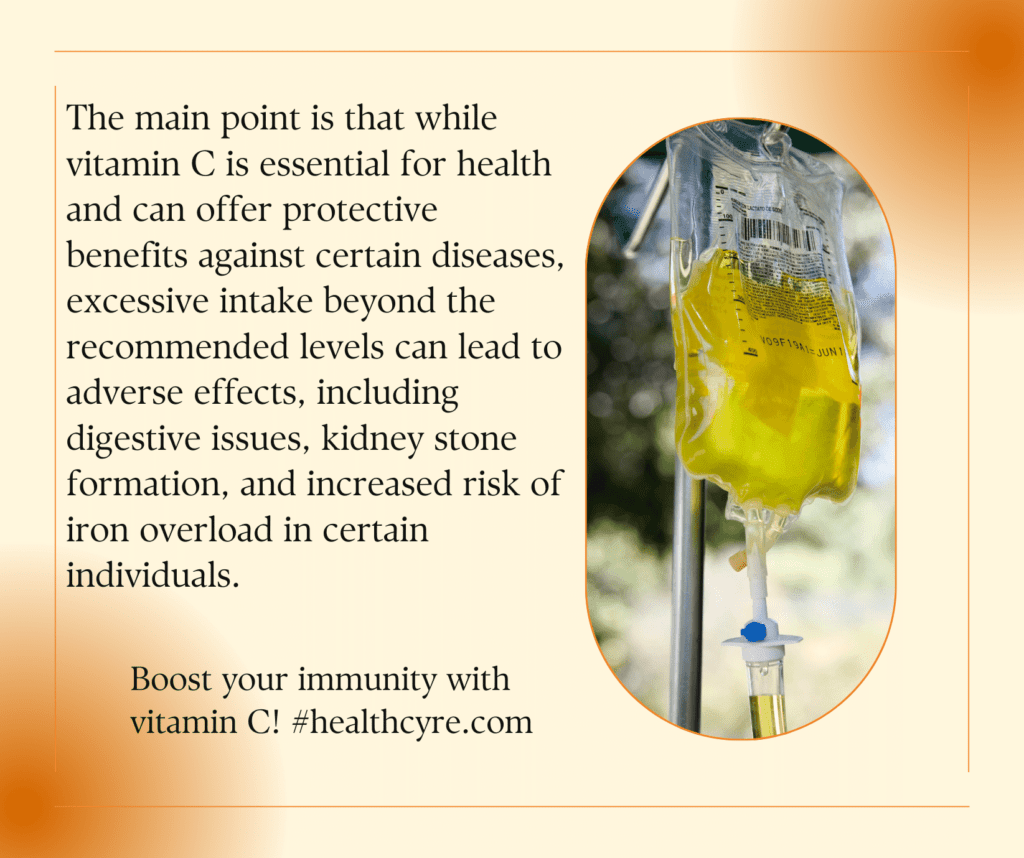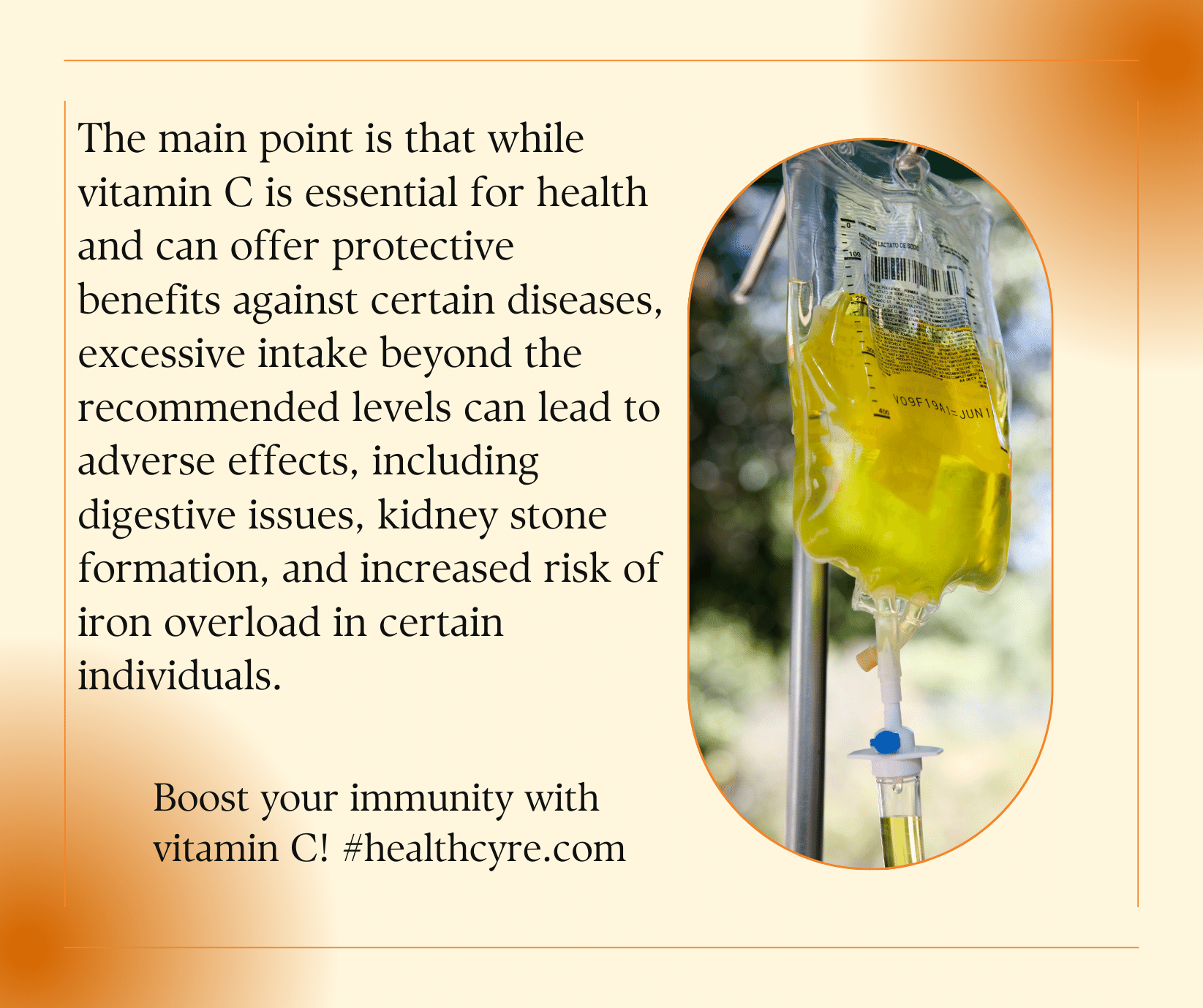VITAMIN C: BENEFITS
When you get the sneeze, do you go for a glass of orange juice or vitamin C tablets? In the 1970s, Linus Pauling, a double Nobel laureate and self-proclaimed advocate, pushed daily megadoses (12 to 24 oranges) to avoid colds and several chronic illnesses.
- Ascorbic acid is a water-soluble vitamin. This implies that it dissolves in water and is transported to the body’s tissues, but it does not store well, so it must be consumed regularly through food or supplements. Even before its discovery in 1932, nutrition professionals realized that something in citrus fruits might prevent scurvy.

- Vitamin C is required for proper immune system function, wound healing, and antioxidant action in the body. The recommended dietary allowance (RDA) varies according to age, gender, and life stage. Adult men normally require approximately 90 milligrams per day, while adult women require approximately 75 milligrams per day.
- Taking higher doses, often known as megadosing, may not give extra advantages beyond satisfying the body’s needs. Excess is frequently eliminated in the urine; therefore, megadosing may result in expensive pee rather than additional health advantages. Furthermore, taking too much vitamin C might cause digestive problems, including vomiting, diarrhea, and stomach cramps. Occasionally, sustained use of extremely high dosages might hurt health. It’s crucial to follow the suggested dosages and consult your doctor before taking more than the suggested dosage of supplements. As a result, while essential for health, it is preferable to satisfy your needs through a well-balanced diet rich in fruits and vegetables rather than depending only on supplements, unless directed differently by a healthcare expert.
VITAMIN C: Recommended Amounts
- RDA: Nutritionists created the Recommended Dietary Allowances (RDAs) for vitamin C, which define the daily dose needed for the best possible health. For those ages 19 and older, the RDA is 90 mg for men and 75 mg for women. During both the pregnancy and breastfeeding stages, the recommended daily dosage increases to 85 and 120 mg, respectively. These guidelines seek to ensure adequate vitamin C consumption to maintain vital biological activities and prevent deficiency.
- UL: The Tolerable Upper Intake Level (UL) is the highest daily amount that is unlikely to cause harm to health. The UL is 2000 mg per day; exceeding this amount may result in digestive problems and diarrhea. Higher doses than the UL are occasionally used in specialized situations, such as under medical supervision or in controlled clinical studies.
Vitamin C absorption and megadosing

Vitamin C and Health
Vitamin C has been shown in studies to help fight the effects of oxidative stress by reducing excessive amounts of free radicals that can harm cells. It also improves the activity of white blood cells, thus improving the i
mmune system. While these benefits improve general health, it is crucial to highlight that protection against particular illnesses is dependent on a variety of factors, such as lifestyle, genes, and total immune function. While vitamin C can boost immune function, it is not a cure-all for certain ailments.
- Chronic diseases.
Some research investigations that track large groups of people over time have shown that increased intakes (from food or supplements) protect against cardiovascular disease and some cancers, whereas others have not. Supplements have not been shown in randomized controlled studies to reduce the incidence of cardiovascular disease or cancer. The general variability of the data makes it impossible to develop a precise vitamin C prescription above the RDA for certain diseases.
- Age-related vision disorders
This is also thought to protect against eye diseases such as blindness and cataracts. Human trials using vitamin C supplements have not produced consistent results, but there appears to be a clear link between a high daily consumption of fruits and vegetables and a lower incidence of cataracts.
- The common cold
Despite its popularity, its ability to fight off colds has yet to be shown. According to many studies, megadoses (more than 500 mg daily) of supplementary medicines have no meaningful impact on the common cold but may have a minor benefit in reducing the length and intensity of colds in select groups of people. Small studies show that the quantity of a standard multivitamin given at the outset of a cold can reduce symptoms, but there is no evidence that megadoses make a difference or prevent colds.
- Gout
The Physicians’ Health Study II, a double-blind, randomized, placebo-controlled trial of almost 14,000 male physicians, discovered a modestly decreased incidence of new gout cases in males who took 500 mg vitamin C supplements daily for up to ten years. Other short-term studies have revealed that it may reduce blood levels of uric acid, a chemical that, if present in excess, can cause gout.
Food Sources
Fruits and vegetables are the best sources of this vitamin.
Citrus (oranges, kiwi, lemon, grapefruit)
Bell peppers
Strawberries
Tomatoes
Cruciferous vegetables (broccoli, Brussels sprouts, cabbage, and cauliflower)
White potatoes
Signs of Deficiency
ITS deficiency is uncommon in advanced countries, although it can occur when a diet contains fewer than 10 mg per day for a month or more. In rich countries, the main risk factors for deficiency include a diet low in fruits and vegetables, smoking or extended exposure to secondhand smoke, and drug misuse. The following are common indicators of deficiency:
1.
Scurvy, the characteristic illness of severe vitamin C insufficiency, shows symptoms caused by reduced protein collagen, which weakens connective tissues.
- skin patches, bleeding, and bruises due to damaged blood vessels.
- Swollen gums that bleed, leading to tooth loss.
- hair loss.
- Skin wounds heal slowly.
Symptoms include fatigue and soreness, as well as iron deficiency anemia caused by reduced absorption.
Did You Know?
- Yes, vitamin C is known for improving the absorption of non-heme iron, which is abundant in plant-based meals such as leafy greens. Consuming a modest glass of 100% fruit juice or including rich foods in your meals will help you absorb more iron.
- It is critical to recognize that levels drop when exposed to heat and light. Cooking at high temperatures or for long periods may deplete this, which dissolves in water and may leach into cooking liquids, resulting in loss if not ingested. Quick cooking techniques, such as stir-frying or boiling, can help retain’ Furthermore, raw vegetables at the pinnacle of their development often have the highest levels.
- serums and creams are popular skin care products renowned for their antioxidant properties and potential benefits for skin health
Terms of Use
The content on this website is meant for educational purposes only and does not constitute personalized medical advice. If you have any questions about a medical concern, it is best to talk with your doctor or another experienced healthcare provider. Never ignore or postpone obtaining competent medical advice based on information gained from this website. The Nutrition Source does not promote or suggest any product.
Lovekesh Sharma
I am Lovekesh Sharma, and I am passionate about blogging. We are glad you are here, and thank you for stopping by the Health Care website. we are a group of passionate writers who share helpful and interesting stuff with you Whether it’s tips on health, stick around and join our journey
https://healthcyre.com/about/ Contattaci


